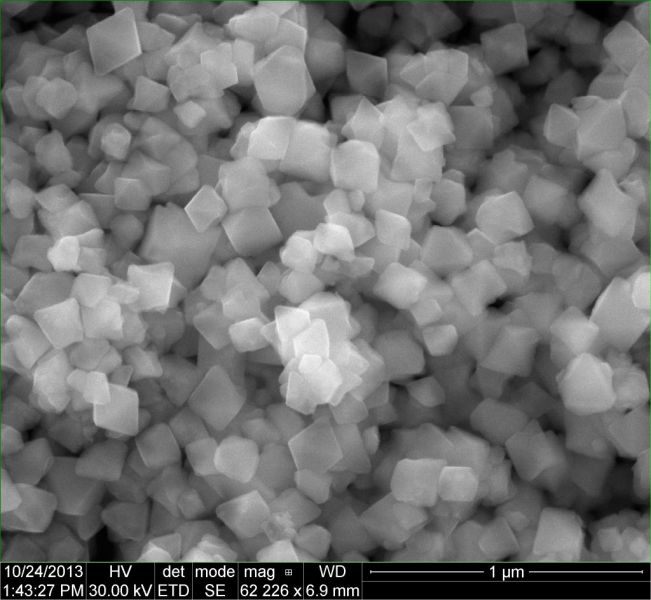Scientific Research

Heterogeneous photocatalysis
Ongoing research concerns the development of methods for the preparation and advanced characterization of new materials (nanoparticles and nanocomposites) with photocatalytic properties. Nanomaterials with photocatalytic properties can be used to produce new photocatalytic and germicidal coatings activated by radiation in the UV-vis range. Characterization of the new materials also includes evaluation of their activity in model aqueous-phase and air purification reactions (removal of model organic matter and removal of model microorganisms from the air) and evaluation of the activity of selected photocatalytic layers in subsequent reaction cycles. Among others, LEDs (emitting radiation at 375 and 415 nm) are used as radiation sources, which allows significant reduction in electricity consumption. Ongoing research work includes:
- development of a method of obtaining, characterization and attempts to elucidate the excitation mechanism of TiO2-based photocatalysts surface-modified with noble metal nanoparticles obtained by radiolysis and in microemulsion environment (cooperation with the research group of Prof. Hynd Remit of Universite Paris Sud, Laboratoire de Chimie Physique in Orsay, France),
- research on the effect of the structure of bimetallic nanoparticles (core-shell or alloy nanoparticles) on the activity of Au/Pt-TiO2, Au/ Pd-TiO2 and Au/Ag-TiO2 nanocomposites,
- development of new photocatalysts for photoconversion of glycerol (cooperation with the research group of Marek Stelmachowski, Ph.D., from the Department of Process Engineering and Environmental Protection, Technical University of Lodz, under grant 2011/01/B/ST8/07159),
- studies of the influence of electrochemical process parameters (electrolyte composition, surface preparation method, calcination conditions) on the morphology of TiO2 doped nanotubes and their activity in a model air purification reaction (toluene degradation in the gas phase)
- study of the mechanism of degradation of pollutants on modified {101} and {001} TiO2 planes (grant 2011/03/D/ST5/05284 funded by NCN in the SONATA program, grant manager: Ewelina Grabowska, PhD),
- development of a method for obtaining third-generation photocatalysts (nanocomposites of three semiconductors differing in the width of the band gap and the position of the edge of the conduction band and the valence band (grant entitled Third-generation photoactive materials and materials-based system for photocatalytic air treatment, PHOTOAIR funded by NCBiR in the Small Grant Scheme, grant manager: Adriana Zaleska, Ph.D.),
- studies on toxicity assessment of TiO2 nanoparticles modified with noble metals (cooperation with the research group of Prof. Tomasz Puzyn from the University of Gdansk and the research group of Prof. Seishiro Hirano from the National Institute for Environmental Science, Tsukuba, Japan).
Heterogeneous catalysis
Investigating the hydrogenolysis of chlorinated organic compounds as a method of waste disposal of PCBs (polychlorinated biphenyls) and other chlorinated, fluorinated organic compounds. The effect of dechlorination conditions such as temperature, alkali concentration, catalyst type, and stirring rate on reaction efficiency is studied. The susceptibility to dechorination of various structures of chlorinated aromatic compounds is studied, including: the effect of the position and type of substituent at the chlorine-containing aromatic ring, the number of chlorine atoms in the dechorinated molecule. The durability of the Pd/C catalyst during the hydrogenolysis process is studied.

.jpg)




